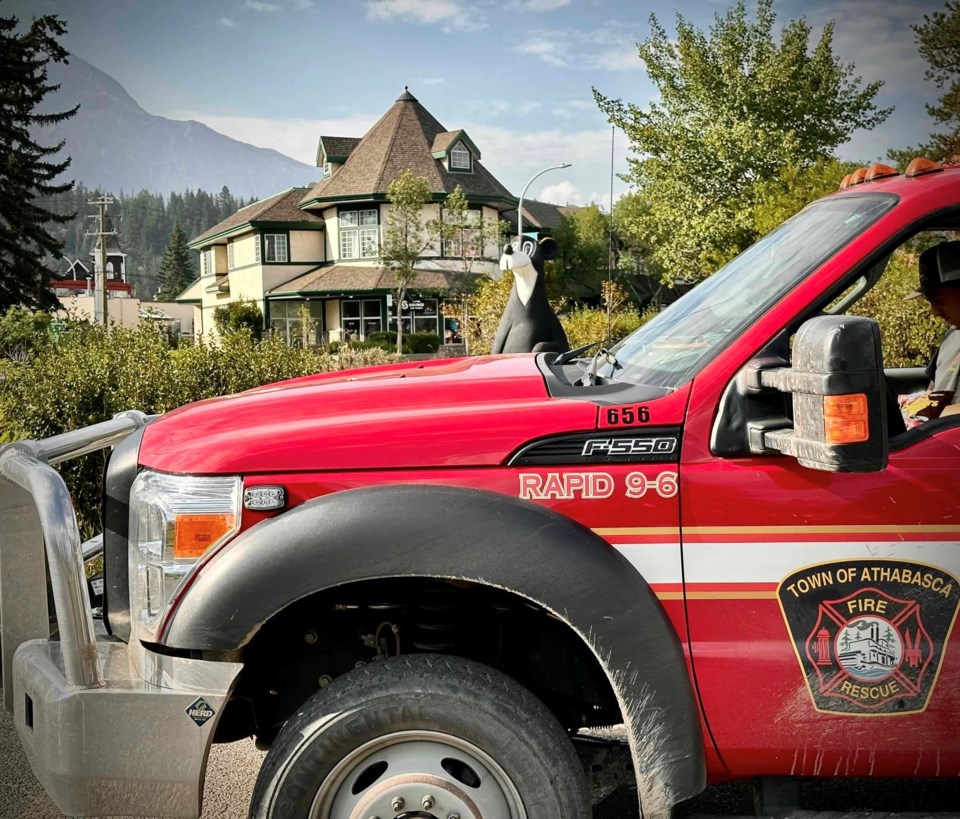JASPER – Four firefighters from the Town of Athabasca and the Village of Boyle’s fire departments are helping with the ongoing firefighting in Jasper after the province asked for assistance earlier this week.
The crew, which consists of three volunteers from Athabasca and one from Boyle, is working in and near the townsite as part of the provincial response. Athabasca County’s deputy fire chief Chris Turcot said they are playing a small role, but he is proud of the team for stepping up.
“They’ve been on hotspot patrol, and then they’ve been assigned an area of sprinklers that are running structural protection right now,” said Turcot. “There’s very specialized wildland sprinklers with pumps and a water source that run heavy water into the area to try and wet it down and divert the wildfire.”
The team arrived in Jasper early in the morning Aug. 5, alongside the town’s Type 7 fire engine — a pickup truck with a skid load on the back for brush fire fighting — and are due back Aug. 13. At the time of writing Turcot was unsure if another Athabasca crew would be replacing the foursome when their rotation is up.
To take part in the Jasper efforts, the volunteers need to have completed their Wildland-Urban interface training, which teaches firefighters how to work in the transition areas between wilderness and human activities.
Turcot said the scale of operations is drastically different than the volunteers are used to, with efforts sometimes involving more than 1,000 firefighters, as opposed to the smaller teams common on structure fires.
“It’s a special training so that they can work in a bigger system and know how to operate, and how wildfire operates,” said Turcot, who got his own first-hand experience working in Fort McMurray for 11 years, including the 2016 fire. “We typically ask for a few other courses on top of that to make sure we provide everyone with incident command training, so they know what they’re walking into.”
The scale of the response operations isn’t the only difference. Turcot said the speed at which wildfires spread changes how firefighters must respond to remain safe.
“When it turns into a big incident like that, where the fire is thousands of hectares and is moving through trees at a speed of multiple metres a second, that’s a very hot, aggressive fire,” he said.
“You can’t get ahead of that; you’re not going to stop a wall of fire like that. The urban interface training is all about how we protect as much as possible without taking undue risk and putting people in harm’s way.”



